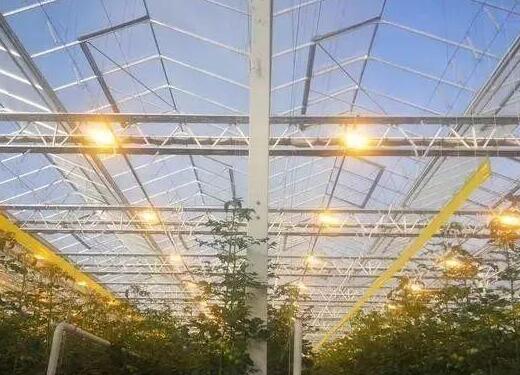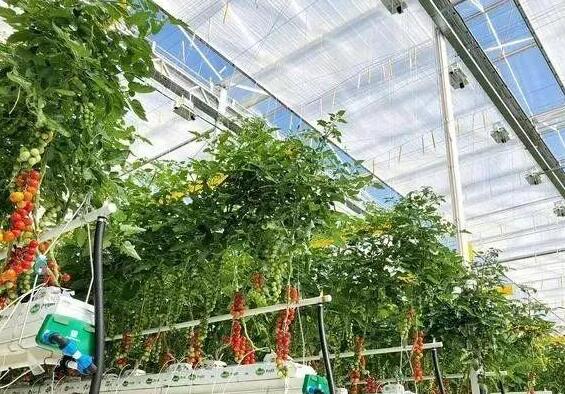
How to design and build advanced Dutch glass greenhouses and their advantages
A glass greenhouse is a greenhouse with glass as a transparent covering material. It is a kind of greenhouse, mainly for the production of tomatoes, peppers, cucumbers, and lettuce. The glass greenhouse has a long service life and is suitable for a variety of regions and climates. The construction of smart agricultural glass greenhouses in the field of modern agricultural planting provides a better growth environment for plants and allows crops to be listed in different seasons, so that consumers can eat fresh fruits and vegetables throughout the year. At present, the most successful application of glass greenhouses in the world is the Netherlands. The Dutch glass greenhouse vegetable cultivation has a history of hundreds of years. Today we will give you an understanding of how the Dutch glass greenhouses are designed and constructed and their advantages.

The main steel structure of the glass greenhouse
The main structure of the glass greenhouse consists of columns, beams, longitudinal beams, surrounding maintenance beams, gutters, and herringbone beams. Among them, the hot-dip galvanized steel is mostly used in the steel structure or some more high-end greenhouses are hot-dipped galvanized steel and coated with plastic. However, it is recommended that the practical glass greenhouse steel use the common hot-dip galvanized steel in the market to meet the requirements. . The difference lies in the gutter. The Dutch standard glass greenhouse gutter uses aluminum alloy gutters. Compared with iron gutters, aluminum alloy gutters have the advantage of good sealing, and the hollow structure forms a thermally insulated bridge.
The covering material of the glass greenhouse is ultra-white diffuse reflection glass
This needs to focus on introducing to everyone, why the Dutch area uses ultra-white diffuse reflection glass as the covering material, which is the advantage of this kind of glass.

Properties and characteristics of tempered glass
Glass is an amorphous inorganic non-metallic material, the main component is silicon dioxide, and the density is 2.5g/cm3. Low-iron ultra-white glass uses ultra-white quartz sand with lower iron content, and the iron content is less than 150PPM. It looks white from the edge of the glass, while ordinary glass looks green from the edge. The light transmittance of 4mm ultra-white low-iron glass is over 91%, and the light transmittance of ordinary glass is 86%. After tempering, it can bear the impact resistance of 1040g steel balls with a height of 100cm. The self-explosion rate is less than three ten thousandths for low-iron ultra-white glass, while the national standard of ordinary glass is three thousandths. The wavelength range of the spectral response is 320-1100nm, and the reflectivity of the 1200nm infrared light wave is relatively high. The visible light band PAR is between 380-780nm, which is the spectrum that meets the most needs of plant photosynthesis.
Diffuse scattering
Different physical treatments with different surface depths and bumps will cause diffuse scattering when light passes through. When looking at objects on the other side of the glass, the objects are blurred, transparent and opaque, soft light, and different degrees of treatment show different degrees of transparency, namely Haze.
High light transmission
The surface is treated by physical and chemical methods to reduce light reflection and increase light transmittance. The high light transmittance and diffuse scattering greenhouse glass of Xinxing Glass: The whole piece of glass is immersed in a special Sol-Gel glass film solution, and after drying and tempering, the light reflection on both sides of the glass is reduced, and the light transmittance reaches more than 97.5%. The main component of Sol-Gel membrane liquid is also silicon dioxide. After being tempered at a high temperature of more than 700 degrees Celsius, it is sintered with the glass as a whole, and it is stable. The hydrophilic structure of the surface is self-cleaning without dripping.
The significance of diffuse scattering glass to modern greenhouses
The hazard of direct light is that direct light will make the greenhouse workers feel dazzling, uncomfortable, and easy to burn the leaves and petals of the crop. The scattered light makes the light soft and uniform, and the growth of the crops in the greenhouse is even, deep illuminating the middle and lower parts of the crop canopy, reducing the occurrence of gray mold at the bottom, making the green leaves brighter and the flowers more delicate. The efficiency of photosynthesis is generally improved, and the output and quality are improved.
Tags:anti-reflective glass diffuse glass agricultural greenhouses glass greenhouse venlo greenhouse AR glass greenhouses glass agricultural glass horticultural glass #greenhouseglass #Antireflectiveglass #Diffusetemperedglass #Ultrawhitefloatglass #agriculturalgreenhouseglass #diffuseglass #horticulturalglass #Tomatogreenhouse #Coloredpeppergreenhouse #Lettucegreenhouse #Agriculturalgreenhouse #ARglass #venlogreenhouse #greenhouseglass #Antireflectiveglass #Diffusetemperedglass #Ultrawhitefloatglass #agriculturalgreenhouseglass #diffuseglass #horticulturalglass #Tomatogreenhouse #Coloredpeppergreenhouse #Lettucegreenhouse #Agriculturalgreenhouse #ARglass #venlogreenhouse #GlassManufacturer #invernadero #ArchitecturalGlass #ClearFloatGlass #FloatGlass
Previous:What are the common system configurations of glass greenhouses
Next:What are the advantages of anti-reflective glass for glass greenhouses



















